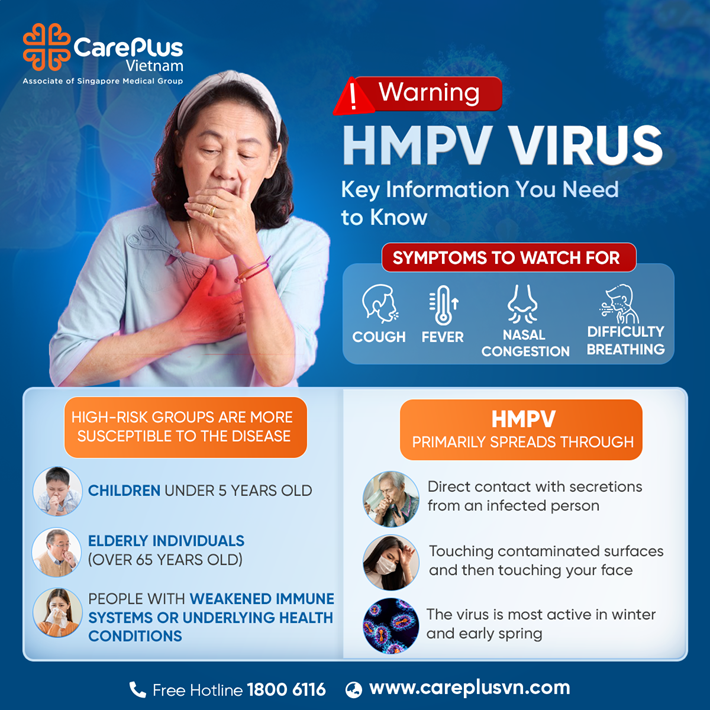Warning: HMPV Virus – Key Information You Need to Know

1/14/2025 9:05:04 AM
Human metapneumovirus (HMPV) is a common respiratory virus first identified in 2001. It can cause illnesses in the upper and lower respiratory tract, particularly affecting young children, the elderly, and those with weakened immune systems.
🤧 Symptoms to watch for
- Cough
- Fever
- Nasal congestion
- Difficulty breathing
🔴 In some cases, HMPV can lead to pneumonia (a lung infection causing breathing difficulty) or bronchitis (inflammation of the airways), especially in high-risk groups such as:
- Children under 5 years old
- Elderly individuals over 65 years old
- People with weakened immune systems or underlying health conditions
📡 How does HMPV spread?
HMPV spreads primarily through:
- Direct contact with secretions from an infected person
- Touching contaminated surfaces, then touching your face, eyes, or mouth
- The virus is most active in winter and early spring
🛡 Effective ways to prevent infection
Although there is no specific vaccine or treatment for HMPV, you can reduce the risk of infection by:
- Washing your hands frequently with soap and water
- Disinfecting frequently touched surfaces like doorknobs, phones, and tabletops
- Wearing a mask in crowded or poorly ventilated areas
- Avoiding close contact with individuals showing cold or flu symptoms
📊 Current situation
Recently, there has been a surge in HMPV cases in China, putting pressure on healthcare systems. However, experts emphasize:
- HMPV is not a new virus and is very different from the COVID-19 pandemic
- Standard prevention measures are sufficient to limit its spread
💡 Protect yourself and your loved ones! Share this information to raise awareness and help others stay safe.
Source: CDC and Cleveland Clinic